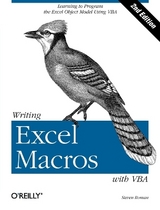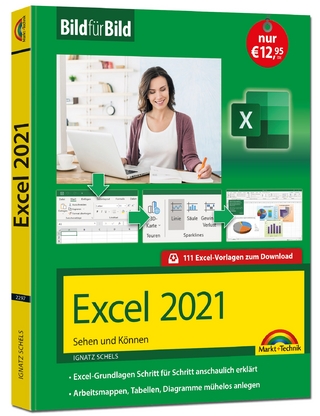
Writing Excel Macros
O'Reilly Media (Verlag)
978-1-56592-587-8 (ISBN)
- Titel erscheint in neuer Auflage
- Artikel merken
Writing Excel Macros offers a solid introduction to writing VBA macros and programs in Excel and shows you how to get more power out of Excel at the programming level. Learn how to get the most out of this formidable application as you focus on programming languages, the Visual Basic Editor, handling code, and the Excel Object Model.
Steven Roman is Professor Emeritus of mathematics at the California State University, Fullerton. He has taught at a number of other universities, including MIT, the University of California at Santa Barbara, and the University of South Florida. Dr. Roman received his B.A. degree from the University of California at Los Angeles and his Ph.D. from the University of Washington. Dr. Roman has authored 32 books, including a number of books on mathematics, such as Coding and Information Theory, Advanced Linear Algebra, and Field Theory, published by Springer-Verlag. He has also written Modules in Mathematics, a series of 15 small books designed for the general college-level liberal arts student. Besides his books for O'Reilly (Access Database Design & Programming, Learning Word Programming, Writing Excel Macros, Developing Visual Basic Add -Ins, Win32 API Programming with Visual Basic (in production)), Dr. Roman has written two other computer books, entitled Concepts of Object-Oriented Programming with Visual Basic and Understanding Personal Computer Hardware, an in-depth look at how PC hardware works, both published by Springer-Verlag. Dr. Roman is interested in combinatorics, algebra, and computer science.
Preface 1. Customizing Emacs Backspace and Delete Lisp Keys and Strings To What Is C-h Bound? To What Should C-h Be Bound? Evaluating Lisp Expressions Apropos 2. Simple New Commands Traversing Windows Line-at-a-Time Scrolling Other Cursor and Text Motion Commands Clobbering Symbolic Links Advised Buffer Switching Addendum: Raw Prefix Argument 3. Cooperating Commands The Symptom A Cure Generalizing the Solution 4. Searching and Modifying Buffers Inserting the Current Time Writestamps Modifystamps 5. Lisp Files Creating a Lisp File Loading the File Compiling the File eval-after-load Local Variables Lists Addendum: Security Consideration 6. Lists The Simple View of Lists List Details Recursive List Functions Iterative List Functions Other Useful List Functions Destructive List Operations Circular Lists?! 7. Minor Mode Paragraph Filling Modes Defining a Minor Mode Mode Meat 8. Evaluation and Error Recovery limited-save-excursion eval Macro Functions Backquote and Unquote Return Value Failing Gracefully Point Marker 9. A Major Mode My Quips File Major Mode Skeleton Changing the Definition of a Paragraph Quip Commands Keymaps Narrowing Derived Modes 10. A Comprehensive Example New York Times Rules Data Representation User Interface Setting Up the Mode Tracking Unauthorized Changes Parsing the Buffer Word Finder Last Word Conclusion A. Lisp Quick Reference Basics Data Types Control Structures Code Objects B. Debugging and Profiling Evaluation The Debugger Edebug The Profiler C. Sharing Your Code Preparing Source Files Documentation Copyright Posting D. Obtaining and Building Emacs Availability of Packages Unpacking, Building, and Installing Emacs Index
| Erscheint lt. Verlag | 8.6.1999 |
|---|---|
| Zusatzinfo | Ill. |
| Verlagsort | Sebastopol |
| Sprache | englisch |
| Maße | 178 x 232 mm |
| Gewicht | 860 g |
| Einbandart | kartoniert |
| Themenwelt | Informatik ► Office Programme ► Excel |
| ISBN-10 | 1-56592-587-4 / 1565925874 |
| ISBN-13 | 978-1-56592-587-8 / 9781565925878 |
| Zustand | Neuware |
| Informationen gemäß Produktsicherheitsverordnung (GPSR) | |
| Haben Sie eine Frage zum Produkt? |
aus dem Bereich



